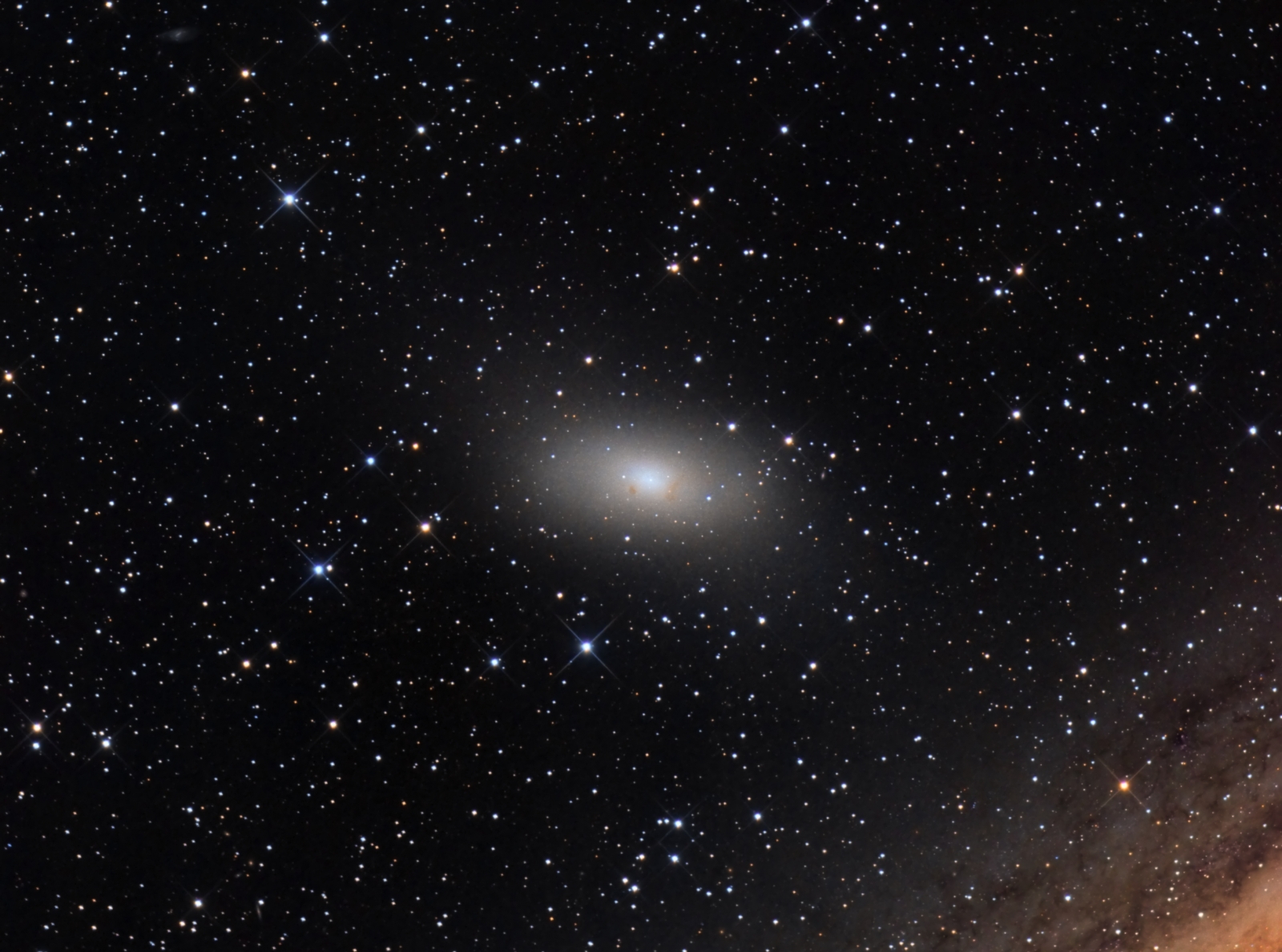M110 Dwarf Elliptical Galaxy
Click image for full size version
October 26, 2014
This dwarf elliptical galaxy would probably get much more attention if it wasn’t right next door to the superb Andromeda Galaxy, M31. Although it is quite pretty in its own right, I have found few images where M110 is the centre of attention; M31 usually steals the show. I decided I would change that, and put M31 mostly out of the picture, at lower right.
M110 looks like a featureless cocoon in the eyepiece and in most photos I’ve seen. However, high resolution images show interesting dark lanes and a core that looks star-like, as well as a sort of granular texture of not-quite-resolved stars. Three of this galaxy’s globular clusters can be seen in this image (G51, G54 and G57). They are similar to the Milky Way’s globulars, like M14, but much, much farther away. M110 lies about 2.9 million light years away and is estimated to have a mass between 3.6 – 15 billion times that of our Sun — small for a galaxy, hence the designation “dwarf.” There are many other galaxies in this image, including barred spiral PGC2314 near the upper left.
M110 was drawn by Charles Messier but it was never included in his list of comet-like objects that eventually became the Messier Catalogue. Carolyn Herschel independently discovered it ten years later, in 1783. It was later added to the Messier Catalogue along with a bunch of other objects that were seen, but not recorded, by Messier.
Tekkies:
Acquisition with TheSkyX. Focusing with FocusMax4. All pre-processing and processing in PixInsight. Acquired from my SkyShed in Guelph, ON. SBIG STL-11000 with Baader LRGB filters. 10″ ASA @ f/6.8 on a Paramount MX. Guiding with SV-80 80 mm f/6 refractor and camera’s Remote Guide Head. Imaging runs were scripted using CCDCommander. No moon for L, crescent moon for RGB. Transparency and seeing good for R, G and B and excellent for Luminance.
6x10m each for R, G and B and 40x10m L (total = 9hr40m)
The batch pre-processing script was used to calibrate, register and combine the frames. All channels were cropped. R, G and B were combined, and RGB and L were background corrected with DynamicBackgroundExtraction. The RGB file was processed with colour calibration, HistogramTransformation, TGVNoiseReduction, another HistogramTransformation, and a curve to boost contrast and saturation.
The L image, which was background-corrected earlier, was processed with deconvolution using a PSF made with the DynamicPSF command and about 50 stars. The image was then stretched with HistogramTransformation, followed by TGVNoiseReduction and another HistogramTransformation. LocalHistogramEqualization was applied using a mask to protect the background and stars.
The luminance of the RGB image was extracted and matched to the L image using LinearFit, and then combined back into the RGB image using ChannelCombine in the Lab colour space. Then LRGBCombine was used to overlay the L onto the RGB and make the LRGB image.
The LRGB image was tweaked for contrast, brightness and saturation.
The Image scale is 1.1 arcsec/pixel for this camera/telescope combination.







Leave A Comment